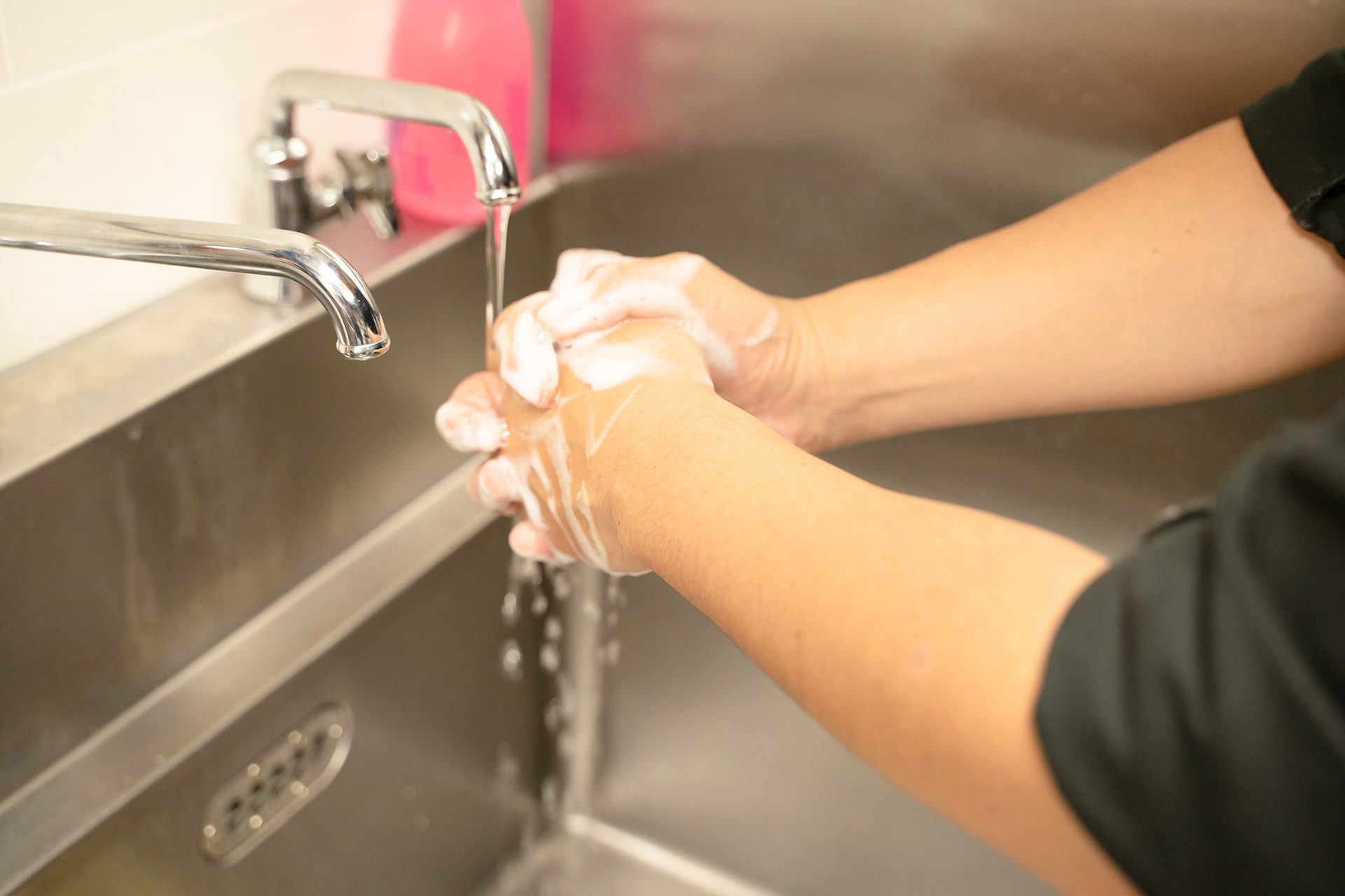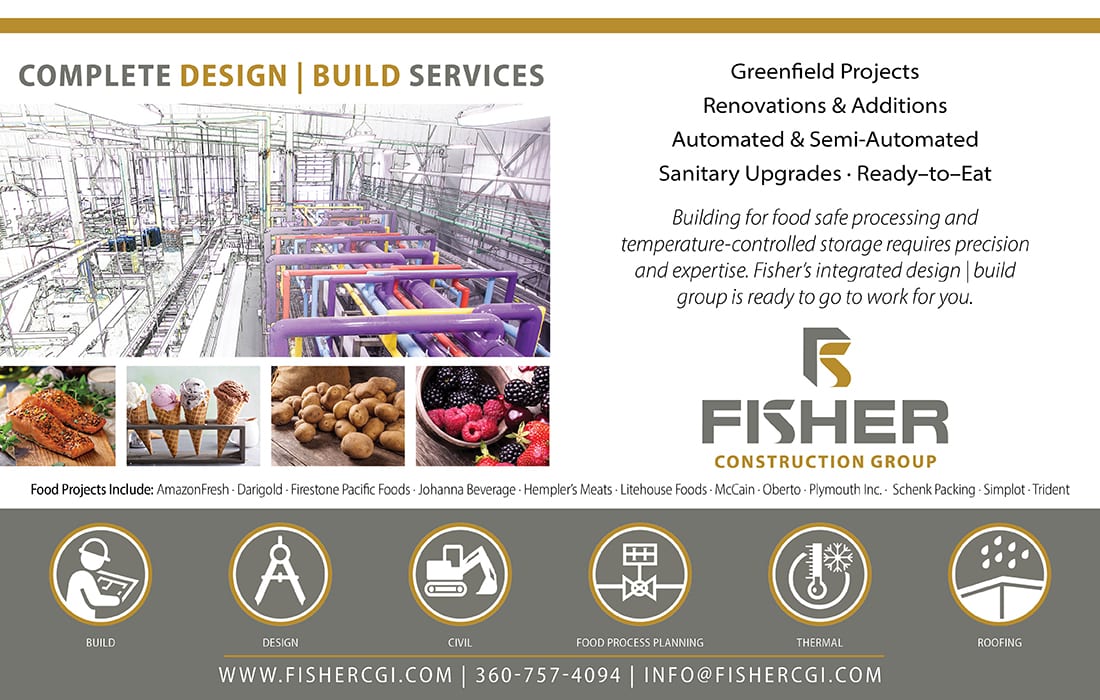June 2022
Complacency can lead to cross-contamination
A solid plan and trained employees can help prevent costly cross-contamination at food processing plants
Photo courtesy of Getty Images/Smederevac
With loads of ingredients coming in, being stored, transported, processed and packaged, there are a number of ways for cross-contamination to occur at food manufacturing plants. Imagine a delivery of carrots entering a facility. After being checked in, they move to the loading dock for inspection, are unloaded and stored in the raw materials area away from possible allergens like wheat flour. When it is time to utilize the carrots, they are walked through the plant along a mapped out path to avoid possible contamination from other materials being used in the production of food at the facility. From there, they are unloaded in a hopper for processing.
Now imagine it’s discovered that a supplier’s driver did not properly wash down his truck before hauling the carrots and cannot guarantee that they are not contaminated. Or maybe the employee transporting the carrots from raw materials to the processing line deviated from their route on the way and accidentally walked through an area where nuts are being processed. Or maybe it is discovered that an employee who was previously handling raw meat failed to properly wash their hands or forgot to don gloves before handling the carrots.
Sharon Spielman, Senior editor
The upside to scenarios like these is that the contamination was caught before the finished product left the facility, avoiding a recall that is not only costly but also possibly damaging to the brand’s reputation. The downside is that these scenarios or a countless number of others can cause a cross-contamination issue that results in a public safety and health issue, wasted materials or a full product recall if not caught before the finished product hits store shelves.
According to Pablo Coronel, Ph.D., director of food processing and food safety, process authority at CRB, “Safety is the number-one concern when it comes to cross-contamination since it’s possible that microbial and allergens can contaminate the product and cause illness or death. There is also the possibility of cross-contamination making the product unsellable due to quality changes, such as contaminating a non-GMO product with GMO ingredients. In either case, the product is considered adulterated and must not reach consumers. Cross-contamination can also cause large economic implications, including product recalls, loss of revenue and possible liability issues.”
Raquel Cadena, International Featured Standards (IFS) technical scheme lead, supply chain food safety, global food division at NSF International, reminds us, “According to the World Health Organization (WHO), an estimated 600 million people worldwide experience a foodborne illness each year. While there are many causes of foodborne illnesses, a major and preventable cause is cross-contamination.”

“Preventing cross-contamination requires the application of hygienic design and construction."
— Pablo Coronel, director of food processing and food safety, process authority at CRB
There are four main types of contamination: chemical, microbiological, physical and allergenic. “Allergenic contamination is an especially concerning risk for people living with food allergies, such as nut, gluten and soy allergies,” Cadena says. “Financial implications for food processors due to cross-contamination can include legal fees due to lawsuits, as well as the impacts of a weakening brand reputation to the bottom line due to public recalls and negative press.”
Challenges
The main challenge is to identify the risks of cross-contamination and to ensure that all the strategies are working at all times, Coronel says. “In new facilities, design to prevent contamination. In existing facilities, identify the risk and establish control measures to prevent cross-contamination. These measures must be evaluated periodically to ensure they are effective and that personnel is aware of the risks and is proactive in prevention.” He says that complacency results in failures in the food safety, therefore it is important to keep the employees well trained and motivated to prevent such failures and diminish the risk of and cross-contamination.
Cadena adds that she finds proper employee education and training; sourcing and purchasing raw materials from legitimate suppliers in the supply chain; mitigating supply chain disruptions; new automation and technology introduced to reduce human contact with food; and ensuring proper use and condition of employee personal protective equipment (PPE), including aprons, uniforms, gloves, hair nets and masks, are the biggest challenges she sees when it comes to cross-contamination at food facilities.

“Follow appropriate cleaning procedures and invest in equipment that has been verified as cleanable and hygienic." — Raquel Cadena, IFS technical scheme lead, supply chain food safety, global food division, NSF International
Preventing cross-contamination
There are several strategies to avoid cross-contamination in a food processing plant. Coronel says, “Preventing cross-contamination requires the application of hygienic design and construction so that equipment is easy to clean, lines are segregated, and the flow of materials and personnel move properly.” To ensure this prevention, he says, processors can follow a number of directives, including:
• The factory itself must be built to ensure that transport and flow of materials and personnel are designed such that there is little chance of exposure of products to another product or to raw materials.
• Product must be moved by using closed containers for transport or moving product inside tubes or covered belts.
• Equipment must be specified for ease of cleaning, which ensures that old product and dirt are removed completely before switching to a different product.
• Building sanitation, simplified by hygienic design, prevents accumulation of dirt or standing water. Floor drains are made to evacuate quickly and prevent formation of aerosols.
• Products and process spaces must be segregated, either by walls or by the use of air pressurization, separating products from raw materials and from one another and preventing cross-contamination.
• Personnel plays a very important role in this as well, by following good manufacturing practices (GMP), such as handwashing and clothes changes, which are basic tools to prevent cross-contamination.
• The flow of personnel must be controlled and follow a limited number of paths, to ensure that the risks of carrying contamination are minimal. Personnel should not be able to go from raw to processed areas or from allergen to non-allergen areas without changing clothes. Shoes must be cleaned and sanitized before moving from area to area.
Staff handwashing and clothes changes are basic tools to prevent cross-contamination in food processing facilities. Photo courtesy of Getty Images/RRice1981

Cadena adds that having a strong food safety culture is key to preventing cross-contamination. “Processors should have a well-designed and implemented personal hygiene program that prioritizes the health of employees and customers.” For instance, proper handwashing (which includes washing sanitizing and drying hands often) when handling food and returning to work must be required.
Other best practices include using color-coding to distinguish between tools and equipment (such as separate cutting boards and utensils for allergen-free preparation), having an adequate process flow from the starting point to the finished product (for both people and the food), developing a production schedule (e.g., prepare non-allergen food first, then clean the prep area, verify it has been done so properly and prepare the allergen food) and monitoring the preparation process closely (both following proper preparation times and temperatures).
“Follow appropriate cleaning procedures and invest in equipment that has been verified as cleanable and hygienic,” Cadena says. “Employees should also be trained on a regular, recurring basis on proper food safety handling and cleaning procedures, including on the use of food equipment. This can support an effective food safety culture within the company.” FE
JUNE 2022


